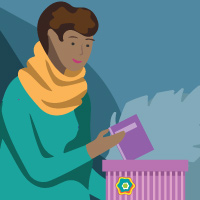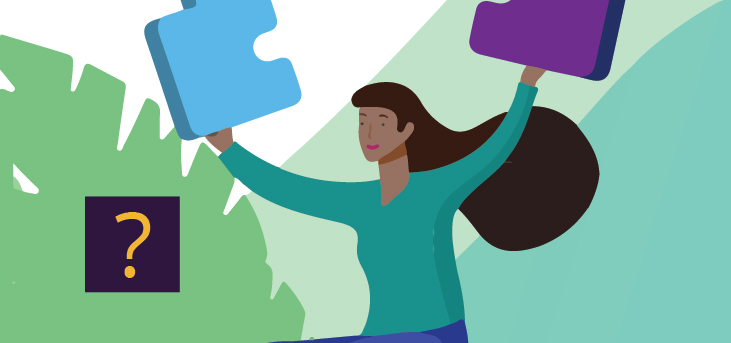Self help: how can I help myself?
| Site: | CAMH Public Courses |
| Course: | Youth Wellness Quest |
| Book: | Self help: how can I help myself? |
| Printed by: | Guest user |
| Date: | Tuesday, 16 September 2025, 6:56 AM |
Self-help: How can I help myself


You can use self-help techniques to help with some of the struggles you may be facing or whenever you feel overwhelmed. Here are some ways you can look after yourself. You might use these strategies in addition to treatment, or on their own.
- Having a conversation with a loved one
- Doing an activity that makes you happy
- Practising a mindfulness exercise
- Writing a list of things you are grateful for
- Writing a list of positive affirmations and sticking them on your wall
- Writing a poem or reading a book Creating/using a self-care box
- Eating something healthy
- Getting a good sleep
- Going for a walk or doing a physical activity you enjoy
- Taking deep breaths
- Dancing to your favourite songs
- Taking a bubble bath
- Smelling a candle or essential oils
- Petting an animal
- Cuddling a soft blanket
- Using a weighted blanket
- Sitting outside in the grass
- Smelling some flowers
- Taking a shower
- Brushing your teeth
- Tidying your living space
- Making a meal you enjoy
- Planning out your week in a calendar
- Doing your laundry
- Spending time alone
- Praying or practising your beliefs
- Meditating or doing yoga
- Being in nature
- Journaling
- Volunteering for a cause you care about
- Going on a date with your loved one
- Going to see your family or friends
- Deleting negative pages on social media
- Joining a new club
- Finding a community online
- Texting a friend to see how they are doing
How can I help myself?
You can use self-help techniques to help with some of the struggles you may be facing, or whenever you feel overwhelmed. You can use this space to think about different ways you can look after yourself.
Download and print out your own list

Activity: Self-help techniques
This is a self-reflection activity. As you do it, you can write your thoughts on a piece of paper. If you have an account, you can click on the button below to write your thoughts on a "Notes" page that you can print or save.
What helps you feel better when you are feeling overwhelmed or down? Create your own list of self-help techniques.
Click the tabs to view each section.
Mindfulness means being aware of the present moment. In our day-to-day lives, we are often in a rush—going to school, doing homework and assignments, cleaning up, spending time with family and friends. We might also be distracted by our smart devices and become overwhelmed. Mindfulness involves slowing things down and thinking about your present moment and how you feel. Take a moment and ask yourself the following questions:
- How do I feel right now?
- What kinds of emotions am I feeling?
- How does my body feel?
There are many ways you can practise mindfulness. YouTube tutorials and phone/tablet apps can guide you. Here is a link to help you start practising mindful breathing:
Grounding techniques help you to stay present and “in the moment” when your mind and body are feeling overwhelmed or stressed. There are lots of grounding techniques. A common one is the “54321” technique:
Look around the room you are in and name 5 things you can see.
Touch 4 things you can feel (e.g., a cushion, a carpet).
Focus on 3 things you can hear (e.g., cars outside).
Notice 2 things you can smell around you (a perfume in the air, food cooking in the kitchen next door).
Focus on 1 thing you can taste.
You can practise mindfulness in your everyday tasks. It can also help you when your mind starts to race or over-think things that make you feel uneasy or overwhelmed. An example of how you can practise mindfulness in your daily life is going for a walk. During your walk, take deep breaths, focus on how the wind or sun feels on your skin and listen to the sounds around you. Washing the dishes is another example: pay attention to the sound of the water and how the soap and water feel on your skin.
You can practise mindfulness in everything you do!
Gratitude means being thankful for things around you. Not everything in your life may be perfect, but you can think about things that make you feel good. You can begin by writing out a list of things you are grateful for, such as a best friend or the meal you are about to eat. You can also make a list of things you are grateful for about yourself! For example, “I am grateful for my strength” or “I am grateful for my beautiful set of teeth.” Everyone’s list is different and yours will be unique. You can read this list whenever you are having a bad day.
Positive affirmations are statements or phrases that you can use to replace negative or unhelpful thoughts you have. You can use positive affirmations to motivate yourself, encourage positive changes in your life or boost your self-esteem. When you find yourself getting caught up in negative talk about yourself, you can use positive affirmations instead.
Examples of positive affirmations could be “I am strong”; “I am calm”; “I am healthy”; “I am beautiful.” Everyone’s positive affirmations will be different and yours will be unique to you! You can write a few positive affirmations for yourself and repeat them in your mind or out loud a few times a day (e.g., when you wake up or before you leave your home). You can also write down your list of affirmations and stick it on the wall in your room as a reminder.

Activity: Positive affirmations
This is a self-reflection activity. As you do it, you can write your thoughts on a piece of paper. If you have an account, you can click on the button below to write your thoughts on a "Notes" page that you can print or save.
What are your positive affirmations for yourself? Use this space to think about positive affirmations you would like to repeat to yourself.

Self-care box
Find any kind of box (such as a shoebox) and fill it with things that make you feel good. Examples of items could be your favourite scented candle, incense sticks, photos of your closest friends and family or a book you love. Open your self-care box when you are feeling uneasy.
Journaling involves writing down your thoughts and feelings. It allows you to pay attention to your emotions and what you are thinking. This activity may help you start to better understand yourself and what you are going through. Journaling can also help you put down in words how you are feeling. It may make it easier to explain what you are going through to people close to you and to your service provider (e.g., your doctor or therapist).

Activity: Journaling
This is a self-reflection activity. As you do it, you can write your thoughts on a piece of paper. If you have an account, you can click on the button below to write your thoughts on a "Notes" page that you can print or save.
How are you feeling today? Use this space to journal your thoughts and feelings.
Key messages
- If you are feeling overwhelmed or are having a bad day, there are different things you can try to help you feel better, such as going for a walk, speaking to someone you trust or playing your favourite music.
- You can also try mindfulness exercises, meditation or journaling.

Create an account to write notes in your journal.

